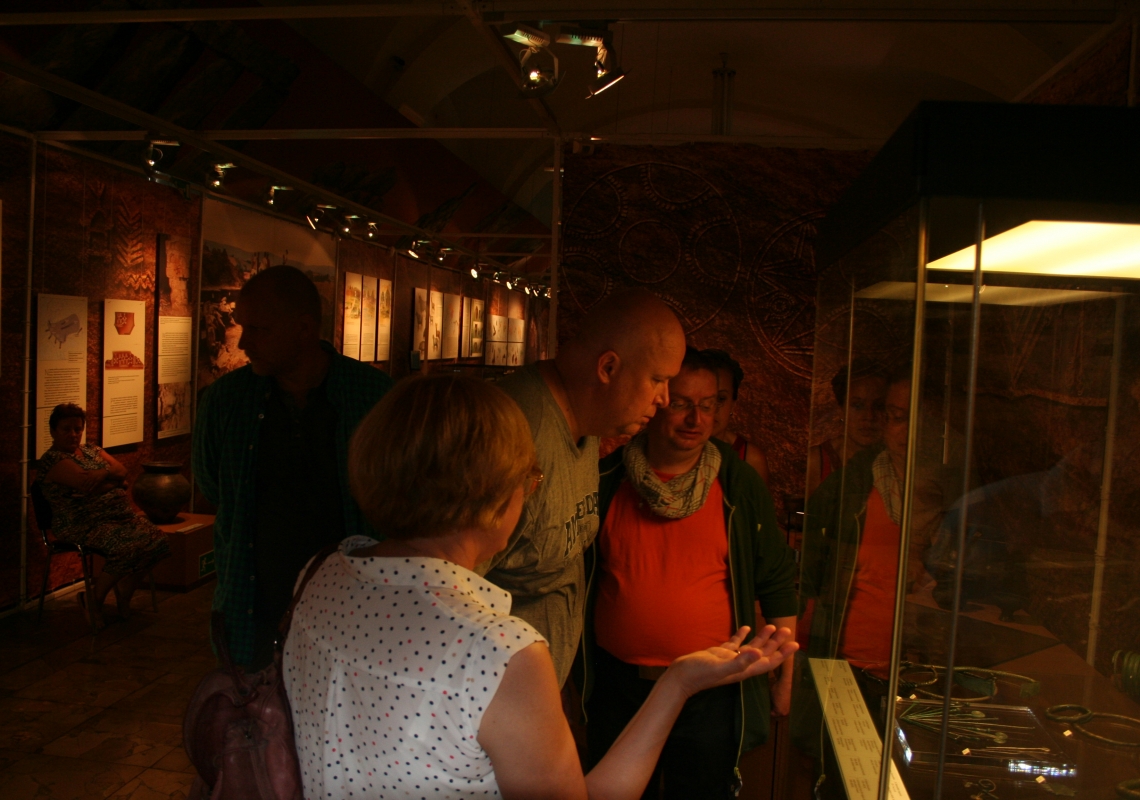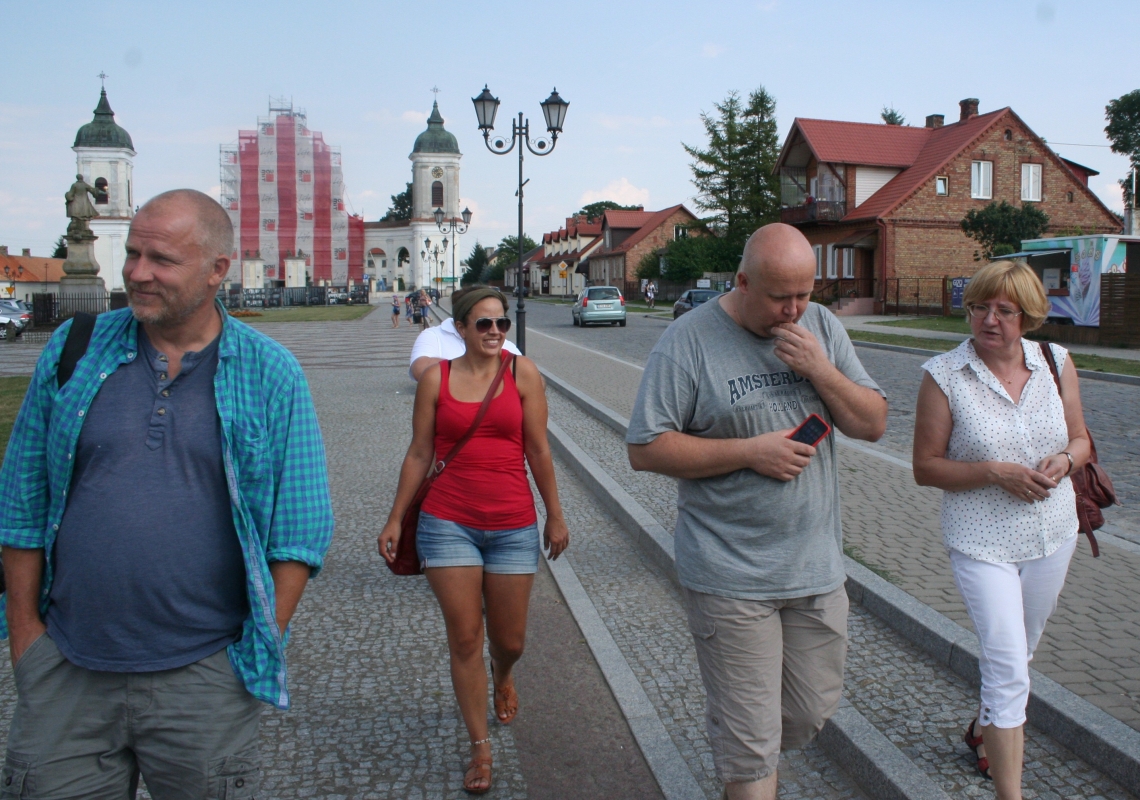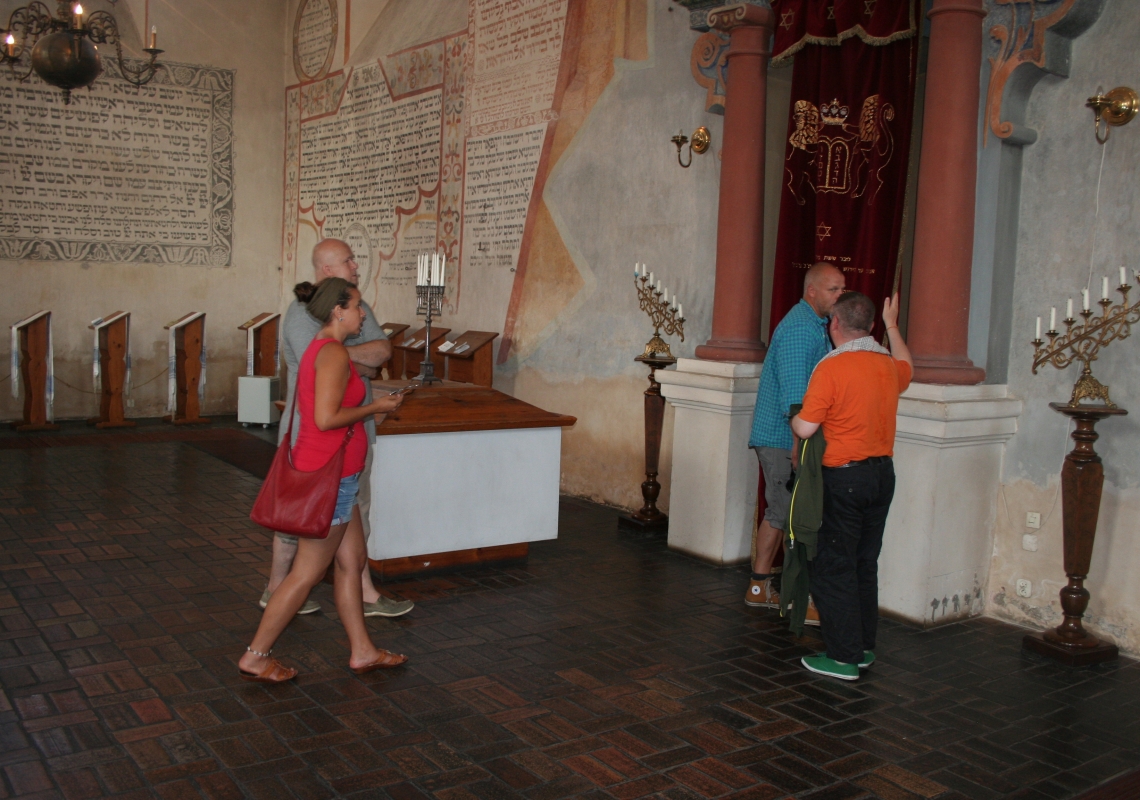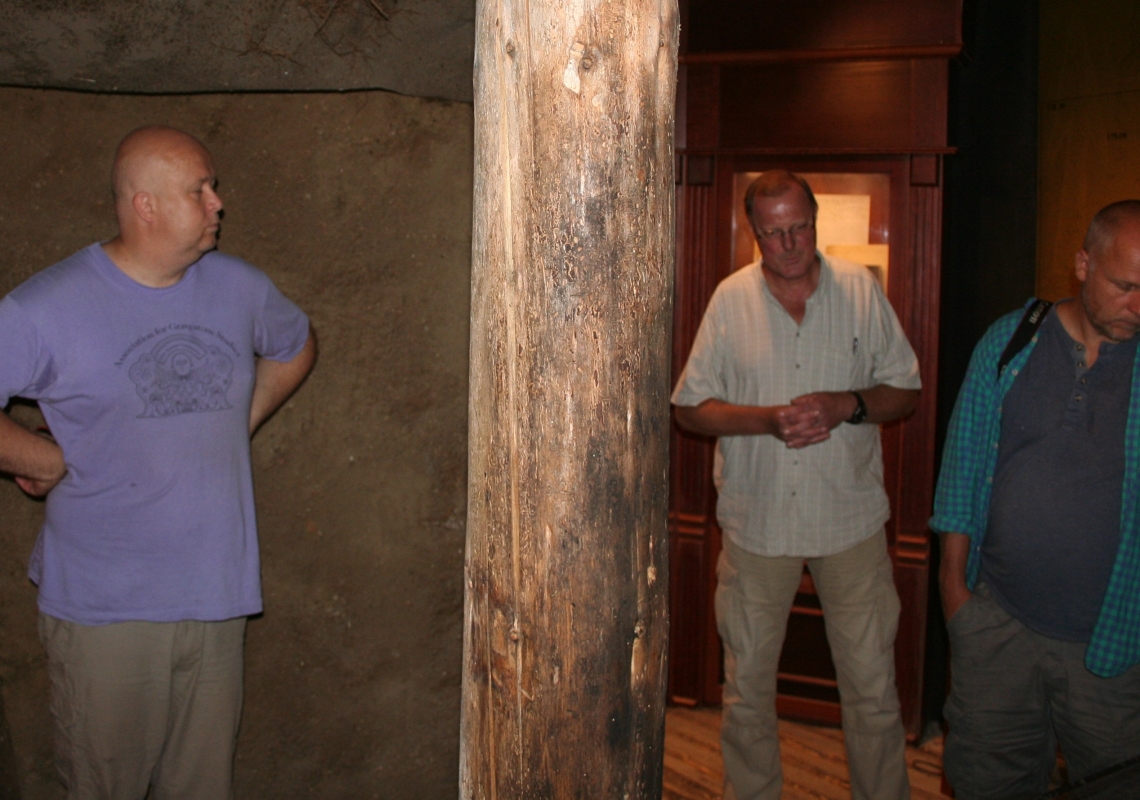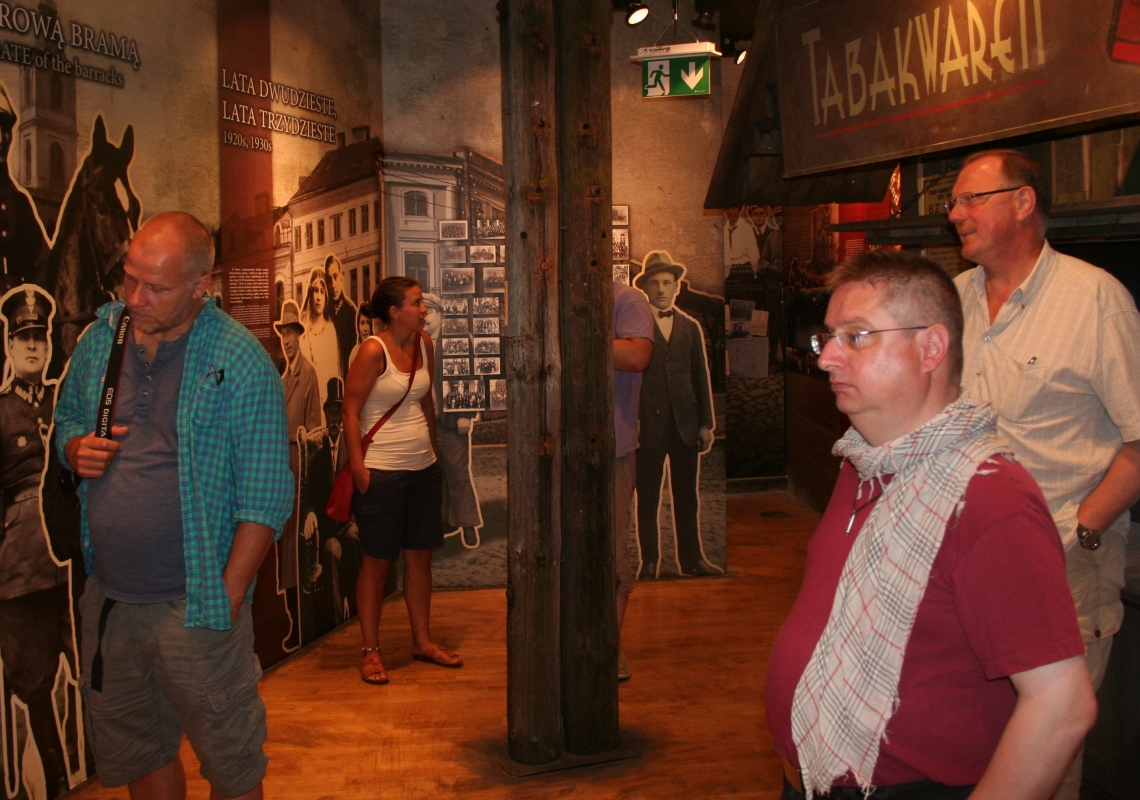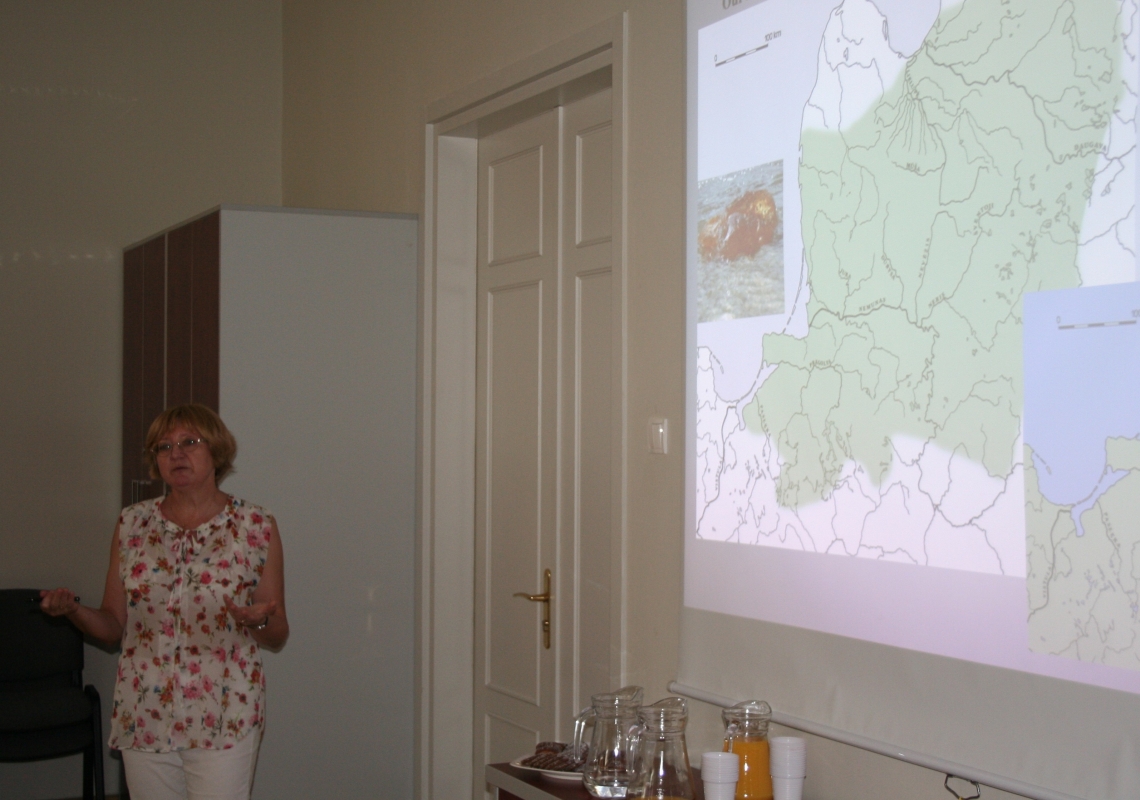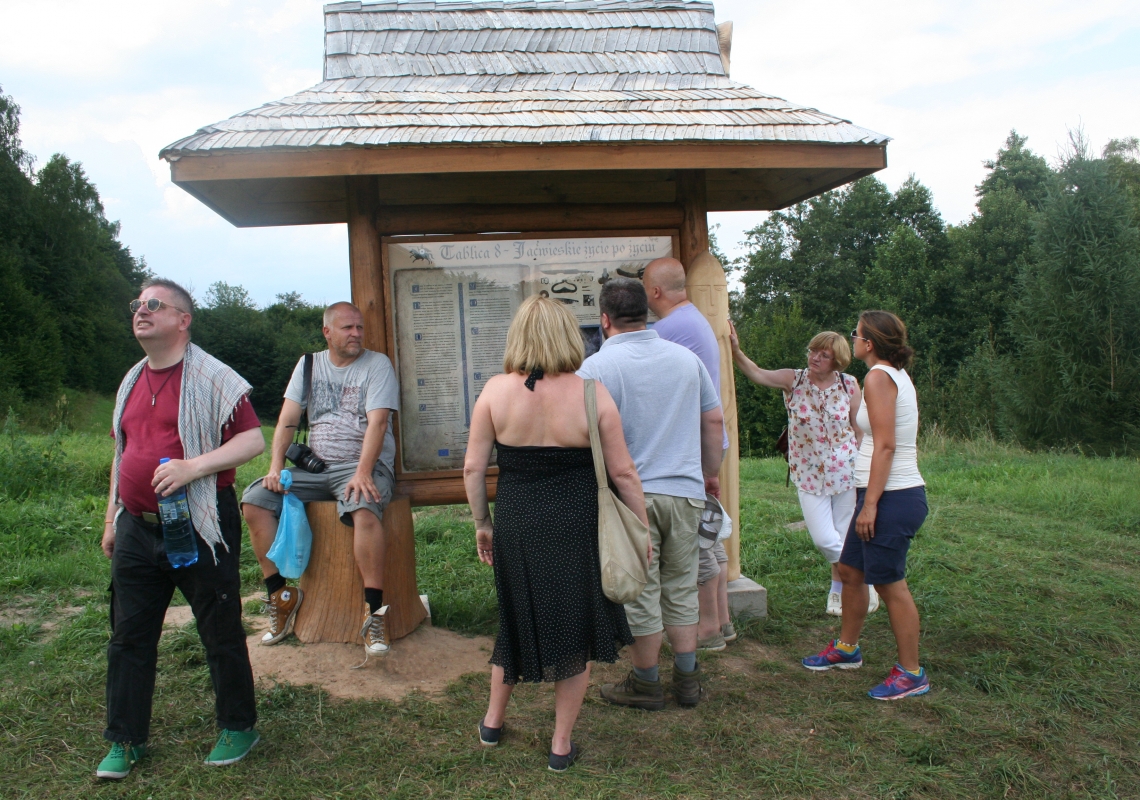The 9-16 August 2014 field workshop had among its participants the representatives of the Norwegian Partners to the Project: Frans-Arne Stylegar, Martin Gollwitzer, Yvonne Willumsen (Kristiansand), and Kjartan Fønstelien (Borre). The Polish hosts gave a multimedia presentation about the Project and reported on its progress; next, the workshop participants were invited to tour the settlement complexes at Szurpiły and Skomack Wielki. With excavations then in progress at Skomack Wielki the visitors viewed the trenching through the hillfort rampart, the stratigraphy inside the settlement and the excavated small finds. This was a good occasion to discuss archaeological excavation methodologies in use in Poland and Norway and to exchange experience about this subject. A few other archaeological sites close to Szurpiły and Skomack Wielki were visited during the workshop: the Yatvingian hillforts at Jegliniec, Rogale and Talusy, the cemetery at Szwajcaria, now a part of the town Suwałki; the Norwegian guests were particularly interested in the hillforts – investigation methods used on them (traditional and non-destructive), the function of these complexes and issues related to their dating. They expressed interest in using the input from the Polish practices. An important element of the workshop were discussions of different ways of presenting the archaeological heritage to a wider audience and the exchange of relevant success stories and practices. The impressive experience of the Norwegian Partners is a valuable contribution to the Project. Other key subjects discussed included archaeological heritage protection in both countries, principles of archaeological conservation and the structure of the conservation services. Other highlights of the workshop included the touring of archaeology (Warsaw and Suwałki) and history (Tykocin, Warsaw) exhibitions, a good starting point for discussing practices used in developing exhibitions and in exhibits display. An important item in this discussion was the exhibition planned within the Project. Last but not least, the workshop was a good occasion for presenting the past and present cultural diversity of the Suwałki Region and Masuria (the heritage of its past inhabitants – Old Prussian and Yatvingian tribes, the heritage of the former East Prussia in Masuria, the Lithuanian and the Belarusian minorities in the Suwałki Region, Old Believer villages in the Suwałki Region).


